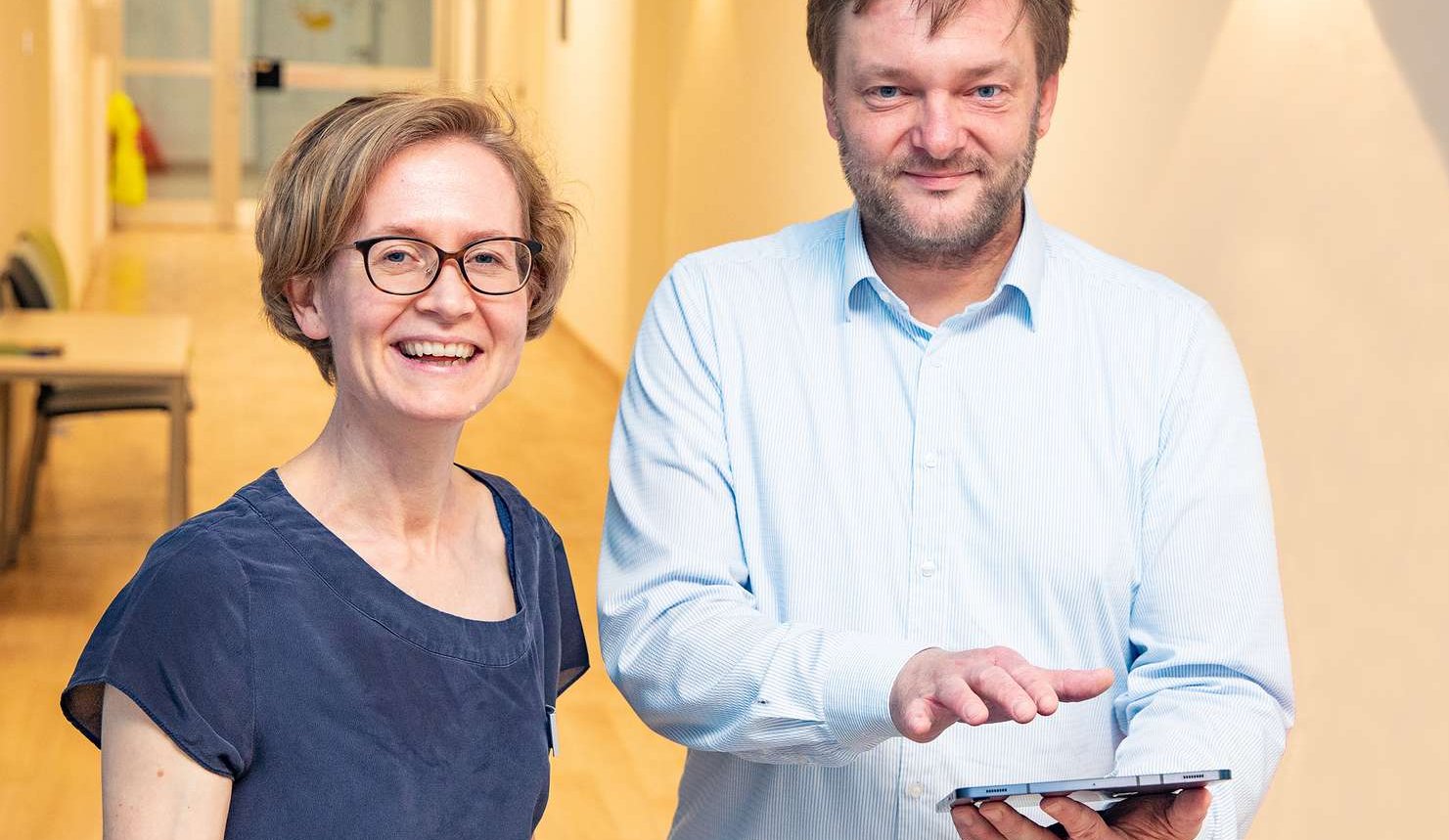The MHH Children's Hospital is participating in a nationwide project to better predict individual disease courses in non-infectious lung diseases using standardised data from health care and environmental data.

Want to use data from the care reality of children and adolescents with asthma to improve individual diagnostics and therapy: Professor Dr. Anna-Maria Dittrich and Dr. Matthias Gietzelt. Copyright: Karin Kaiser / MHH
Bronchial asthma and chronic obstructive pulmonary disease (COPD) are the most common non-infectious diseases of the lungs. The main symptoms are manifold. In addition, the causes of the disease, the course of the disease and the response to medication and therapy vary from person to person. In order to better understand the influencing factors and their interaction for the course of the disease, especially for acute deteriorations, twelve university hospitals want to collect data from as many affected persons as possible from outpatient and inpatient care and make it usable for joint research. The CALM-QE project combines expertise from adult and paediatric pneumology. It is being funded by the Federal Ministry of Education and Research (BMBF) over four years with more than ten million euros as part of the medical informatics initiative. The Philipps University of Marburg is the overall coordinator, and the Hannover Medical School (MHH) is participating as a data integration centre via the Peter L. Reichertz Institute (PLRI). The Department of Paediatric Pneumology, Allergology and Neonatology at the MHH Children's Hospital is also in charge of the paediatric and adolescent medicine section. The sub-project receives funding of more than one million euros.
Participants are not specifically selected
"With our partner institutions, we want to bring together data not only from the hospital information systems but also from surrounding practices, since after all 90 per cent of the treatments take place outside the University Medical Center," says Professor Dr Anna-Maria Dittrich, senior physician at the paediatric clinic. In order to reflect the reality of care, the existing data sets are to be expanded to include lung functions, imaging and medication data. "In addition, for the first time we are including environmental data relevant to lung diseases, such as pollen count, pollution and climate, and investigating which influences affect the course of the disease. “Patients play an active role in CALM-QE, because the project will also include data from the participants' everyday lives that reflect stressful situations, stress or sleep behaviour. This is done with smartwatches, "intelligent" wristwatches that measure and store physical parameters such as physical activity, pulse rate or oxygen saturation in real time.
Predicting disease development with structured data
In order to make the data from the clinics, practices and patient-generated data usable and comparable for all researchers, they must first be standardised and structured. This is being done at the MHH by the team led by Dr. Matthias Gietzelt, research associate at the PLRI. "We have already prepared the infrastructure for this," says the head of the MHH Medical Data Integration Centre. Complex modelling using artificial intelligence and machine learning should make it possible to predict severe courses of COPD and asthma. "In this way, we hope to determine individual risk factors, influence the respective disease development, prevent short-term deteriorations such as asthma attacks or improve long-term effects on lung function," hopes Clinic Director Professor Dr Gesine Hansen. "The aim is to be able to make a diagnosis adapted to each patient and to give more individualised therapy recommendations that effectively counteract the personal risk factors."
Text: Kirsten Pötzke